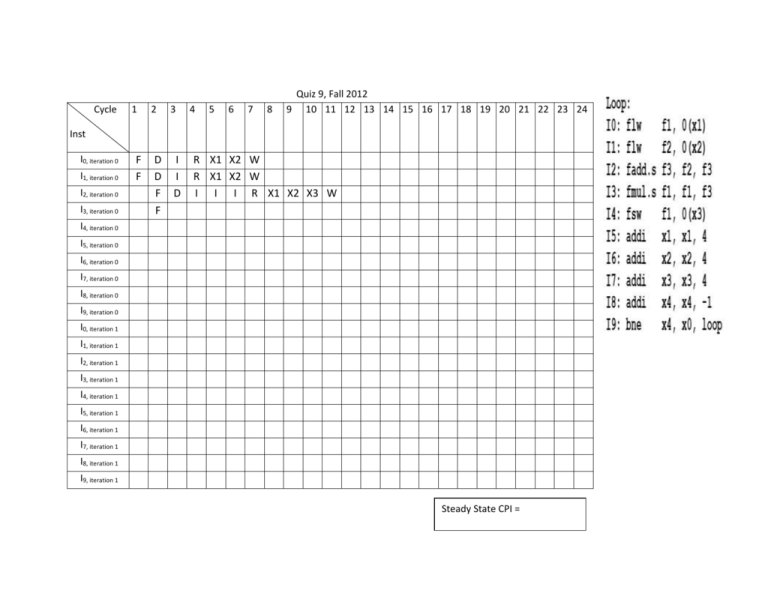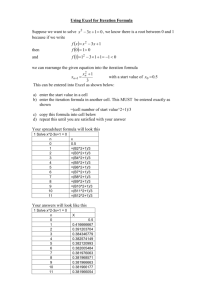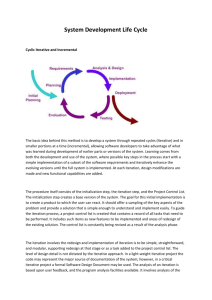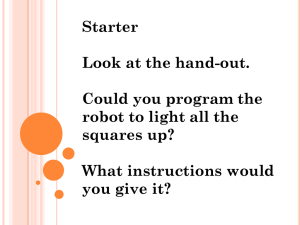x2 denote
advertisement

Cycle 1 2 3 4 5 6 7 8 Quiz 9, Fall 2012 9 10 11 12 13 14 15 16 17 18 19 20 21 22 23 24 Inst I0, iteration 0 I1, iteration 0 I2, iteration 0 I3, iteration 0 F F D D F F I I D R X1 X2 W R X1 X2 W I I I R X1 X2 X3 W I4, iteration 0 I5, iteration 0 I6, iteration 0 I7, iteration 0 I8, iteration 0 I9, iteration 0 I0, iteration 1 I1, iteration 1 I2, iteration 1 I3, iteration 1 I4, iteration 1 I5, iteration 1 I6, iteration 1 I7, iteration 1 I8, iteration 1 I9, iteration 1 Steady State CPI = NAME:_________________________ The following question concerns the scheduling of floating-point code on a dual issue out-of-order processor. Figure 1. Dual Issue, Out-of-order Pipeline The processor contains the following stages: Fetch (F), Decode/Rename (D), Issue (I), Regfile Read (R), Execute(X1,X2,...), and Regfile Writeback (W) The Execute stage takes a variable number of cycles, depending on the instruction: - one cycle for ALU and branch operations (denoted as X1) - two cycles for memory operations (X1,X2, which includes the time in the ALU) - three cycles for floating-point add instructions (X1,X2,X3) - four cycles for floating-point multiply instructions (X1,X2,X3,X4) You can assume that: All functional units are fully pipelined. There is register renaming. There are two register domains: a set for integer registers (x1,x2,...) and a set for floatingpoint registers (f1, f2, ...). The Fetch stage performs perfect branch prediction, and the fetch buffer can hold an infinite number of instructions. The Issue stage is a buffer of unlimited length that holds instructions waiting to begin execution (aka, the instruction window). An instruction will only exit the Issue stage if it does not cause any hazards and its operands will be ready by Register Read stage. Two instructions are fetched at a time. Two instructions are decoded and renamed at a time. Up to two instructions of any kind can be issued at a time, and if multiple instructions are ready, the oldest two will go first. An infinite number of instructions may write back to the register file simultaneously. There is no bypassing between functional units. All operand data is read from the register file, but the register file bypasses write values to the read ports. Store data is not needed until for address calculation and can be bypassed from the register file directly to the end of the (X1) stage. For the purposes of this question, treat stores as a single instruction that issues when both of its operands are ready. NAME:_________________________ For this problem we will be describing the scheduling of the following RISC-V code: Loop: I0: flw I1: flw I2: fadd.s I3: fmul.s I4: fsw I5: addi I6: addi I7: addi I8: addi I9: bne f1, f2, f3, f1, f1, x1, x2, x3, x4, x4, 0(x1) 0(x2) f2, f3 f1, f3 0(x3) x1, 4 x2, 4 x3, 4 x4, -1 x0, loop Instructions postfixed (*.s) denote instructions that affect single-precision floating point numbers. Complete Table 1 (found on the following page), indicating which stage each instruction is in for each cycle. Assume all register values are available at the start of the execution of the code and that the loop is taken. The first three rows have been completed for you, and the fourth row has been started. It is okay if your instructions run off the right side of the table. For a sufficiently large number of iterations of the above loop, what CPI do you expect to achieve? NAME:_________________________ Write back on stores occurs on cycle 18 and 23, branches on 12 and 17, so 5 cycles for 10 instructions comes out to be 0.5 CPI. 0 points for saying “total cycles over total instructions.” I7, ITERATION 0, ONE EXTRA CYCLE IN I BECAUSE I6 AND I2 ARE IN r IN THAT CYCLE








